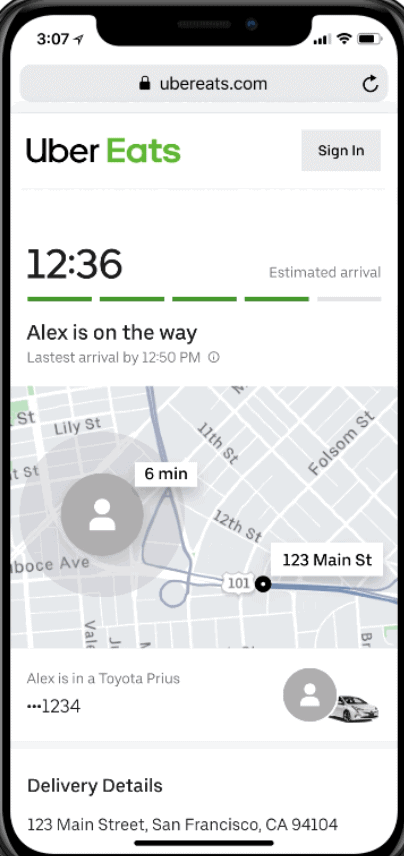When it comes to food delivery services, DoorDash and Uber Eats are two of the most prominent names in the industry. Both platforms have revolutionized the way we order food, offering convenience and a wide variety of dining options right at our fingertips. However, with so many choices available, it can be challenging to decide which service is best suited for your needs. Whether you're a consumer looking for the best deals or a driver partner seeking the most lucrative opportunities, understanding the nuances between these two giants is essential.
In 2023, the competition between DoorDash and Uber Eats has intensified, with both companies continuously enhancing their offerings to attract more users. From pricing models and delivery fees to the range of restaurants available, each platform brings something unique to the table. This article aims to delve deeper into the specifics of DoorDash and Uber Eats, providing insights that will help you make an informed decision about which service aligns better with your lifestyle and preferences.
As a driver partner, choosing between DoorDash and GrubHub can significantly impact your earning potential. While DoorDash offers a vast network of restaurants and customers, GrubHub provides its own set of advantages. DoorDash charges a service fee on top of their delivery fee, whereas UberEats tends to be more expensive overall. Understanding these cost structures can help drivers optimize their earnings. Additionally, platforms like Skip might offer lower costs but come with different operational challenges.
CloudKitchens introduces a new dimension to the food delivery landscape by focusing on building commercial kitchen spaces in less-trafficked areas and renting them out to operators who run delivery-only food businesses. This model shifts the dynamics of traditional restaurant operations, allowing businesses to focus solely on delivery without the overhead of maintaining a dine-in space. Comparing CloudKitchens with DoorDash and UberEats reveals how restaurants can adapt to changing market conditions while leveraging technology to reach their customers effectively.
Market Performance: DoorDash vs Uber Eats
The quarterly government statistics from 2024 provide valuable insights into the performance of DoorDash and Uber Eats. During this period, DoorDash's total dollar value of orders reached approximately 21.3 billion U.S. dollars, showcasing its dominance in the marketplace. These numbers reflect not only the popularity of DoorDash among consumers but also its ability to maintain a strong financial position amidst increasing competition.
On the other hand, Uber Eats continues to hold its ground as a formidable competitor. Despite facing challenges such as higher delivery fees compared to DoorDash, Uber Eats remains a preferred choice for many due to features like license plate visibility for easier pickups. The ability to track drivers accurately adds an extra layer of convenience for customers, making it an attractive option despite potentially higher costs.
Both platforms have demonstrated resilience and innovation, driving growth through strategic partnerships and technological advancements. As they continue to evolve, the battle for market share intensifies, benefiting consumers who enjoy improved services and expanded options.
Cycling Through Delivery Options
For those considering delivering food via bicycle, both Uber Eats and DoorDash present viable opportunities. From July to October 2023, one individual successfully delivered food using their bike, highlighting the potential profitability of this method. By optimizing routes and managing time efficiently, cyclists can earn upwards of $25 per hour during peak dinner times.
Beyond monetary gains, biking offers environmental benefits and health advantages over traditional vehicle-based deliveries. It reduces carbon emissions while promoting physical activity among delivery personnel. Moreover, cities with robust cycling infrastructure support sustainable urban mobility solutions, encouraging more people to adopt eco-friendly practices.
However, there are challenges associated with biking deliveries, including weather conditions and navigating busy streets. To overcome these obstacles, newcomers should familiarize themselves with local regulations and invest in proper equipment such as insulated bags and reflective gear. With preparation and perseverance, anyone can turn biking into a rewarding side hustle.
User Experience: Choosing Between Platforms
Ultimately, the decision between DoorDash and Uber Eats often comes down to user experience. Factors such as ease of use, availability of desired restaurants, and customer support play crucial roles in shaping satisfaction levels. For instance, some users prefer Uber Eats because it displays the driver's license plate information, simplifying communication during pickup.
Meanwhile, DoorDash excels in providing extensive restaurant networks and competitive pricing strategies. Its commitment to enhancing user interfaces ensures seamless transactions and reliable service delivery. Customers appreciate features like real-time updates and flexible scheduling options, which enhance overall convenience.
Regardless of personal preferences, both platforms strive to deliver exceptional experiences tailored to individual needs. As technology continues to advance, expect further improvements aimed at strengthening connections between providers and consumers alike. In conclusion, evaluating specific requirements will guide users toward selecting the ideal platform for their circumstances.

